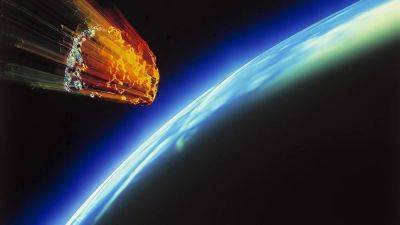In the past decade, there have been several close calls with asteroids. While none of them have caused enough damage to wipe out life on Earth, they have impacted the surface and given us a stern indication of their destructive potential. In 2013, a mere 59 feet wide space rock, which is no bigger than a small house, was observed rushing towards Chelyabinsk in Russia at a speed of 65000 kilometers per hour and exploded over the city. While its impact was non-fatal, it still injured as many as 1400 people and damaged over 7000 buildings.
Asteroid 2023 OE5 speeding towards Earth; NASA reveals close encounter details
07.08.2023 - 13:03 / tech.hindustantimes.com / Karl Reinmuth
Asteroids follow orbits that occasionally bring them near Earth, and their potential threat to our planet is a concern acknowledged by the US space agency NASA. Throughout time, various asteroid impacts have occurred, such as the Chelyabinsk asteroid event and the devastating Chicxulub asteroid, which is believed to have resulted in dinosaur extinction. More recently, an incident in France involved a space rock striking a woman in the chest. Putting things in perspective is NASA's Dr. Kelly E. Fast, who emphasizes that Earth has experienced asteroid impacts in the past and believes that such events will recur. The idea is to find and track all asteroids that pose a threat to Earth and deal with it.
According to the details published by the Center for Near-Earth Object Studies (CNEOS), an asteroid, given the designation of Asteroid 2023 OE5, is on its way toward Earth and could make its closest approach to the planet on August 14.
As per the details, Asteroid 2023 OE5 is expected to make its closest approach to the planet at a distance of just 960000 kilometers, and at a speed of 13934 kilometers per hour. The asteroid is estimated to be the size of a house.
This question always arises when an asteroid approaches Earth - is it hazardous for our planet? However, NASA says that Asteroid 2023 OE5 isn't large enough to be a "Potentially Hazardous Object," and the agency does not believe it will actually hit the ground. NASA estimates that Asteroid 2023 OE5, is about 57 feet wide.
The asteroid 2023 OE5 belongs to the Apollo group of Near-Earth Asteroids. These asteroids are Earth-crossing space rocks with semi-major axes larger than Earth's. These asteroids are named after the humongous 1862 Apollo asteroid which was discovered by German astronomer Karl Reinmuth in the 1930s.
According to NASA, the asteroid 2023 0E5 was first seen on 24 July 2023 and it was last observed on July 30, 2023.
The next asteroid after 2023 OE5 is expected to approach Earth on 17 August 2023. It is called 2022 CP1 asteroid. It will approach Earth at a speed of 35347 KM per hour.

Close call! Aircraft-sized asteroid coming, NASA reveals details
NASA is gearing up to launch its Psyche mission from the Kennedy Space Center in Florida on October 5 at 10:38 a.m. EDT, and it has now called upon digital content creators to cover this amazing feat. The Psyche spacecraft, assisted by a SpaceX Falcon Heavy rocket, will lift off from Launch Complex 39A and will undertake a journey to an asteroid called 16 Psyche, which is located in the main asteroid belt, between the orbits of Jupiter and Mars.
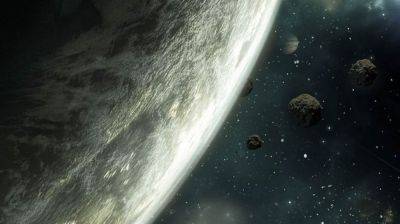
Aircraft-sized asteroid will pass Earth closely today! NASA tracks its size, speed
Asteroids often make close approaches to Earth, but did you know that one of them hit the planet this year? NASA revealed that on February 15, a 1000-pound, 2 feet wide space rock turned into an atmospheric fireball and broke into pieces about 21 miles above Earth's surface and was found near McAllen, Texas. Law enforcement agencies in the McAllen region received several calls from residents who reported hearing a loud explosion. According to NASA, the space rock was travelling at about 43000 kilometers per hour and it had an energy of about 8 tons of TNT.
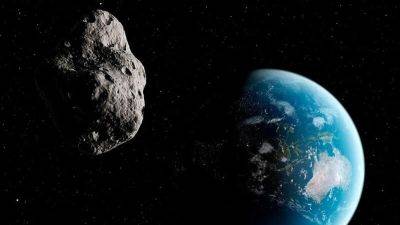
180-foot asteroid rushing towards Earth, NASA says; Know all the details
We know that asteroids have the potential to cause major damage, and even wipe out life on Earth. On the other hand, these space rocks can also provide us with valuable resources such as water, metals, and other minerals. Scientists study asteroids to learn more about the early solar system and the conditions that existed when the planets were forming. But now, a method has been devised to protect Earth from the Sun's intense rays, in a bid to mitigate climate change. This move, ideated by astronomer Istvan Szapudi, from the University of Hawai'i Institute for Astronomy, proposes a space-based solar radiation management (SRM) shield or shade that is tethered to an asteroid as a counterweight.
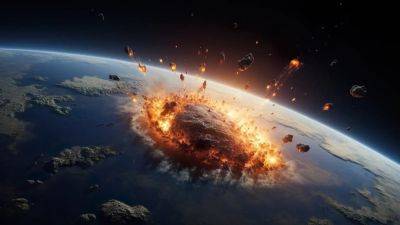
220-foot asteroid to buzz Earth today! NASA reveals speed, size and more
The Alvarez hypothesis, proposed by the father and son duo Luis and Walter Alvarez in 1980, states that an asteroid struck Earth more than 65 million years ago and kicked off the extinction of dinosaurs. Although its impact crater has been presumed to be in Mexico, new light has now been shed on how it reached Earth. According to the English physicist Brian Cox, the asteroid, which formed a 140-kilometer impact crater, was thrown off its course by Jupiter, the largest planet in our Solar System.

Asteroid 2023 QR to get extremely close to Earth today at just 129,000 miles, says NASA
Asteroids have become top billing in news ever since it was first surmised that one such space rock had caused the demise of the dinosaurs. However, did you know that asteroids are sometimes called minor planets? According to NASA, asteroids are rocky parts that were left from the early formation of our solar system about 4.6 billion years ago. The size of the asteroids ranges from 530 km in diameter to 10 m. These space rocks are usually observed in the main asteroid belt between the orbits of Mars and Jupiter. However, there is a probability of asteroids being threat to our planet. Therefore, it is extremely important to track them. Sometimes, interaction with a planet's gravitational field knocks these asteroids off their trajectories and sends them towards a planet like Earth for potential impact.
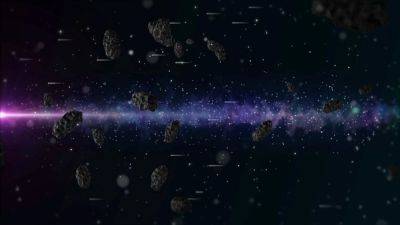
Asteroid, as big as Boeing 777, is hurtling towards Earth; NASA shares the details
Asteroids will always be a matter of concern for the Earth. Therefore, their detection and monitoring is necessary. One meteor named the Chelyabinsk meteor exploded over the city of Chelyabinsk in the southern Urals region of Russia on February 15, 2013. It injured 1,500 people with flying glass from broken windows. The Planetary Defense Coordination Office (PDCO), a branch of NASA, monitors the skies and keeps a watch on various Near-Earth Objects (NEOs). The organization has recently issued a warning against an asteroid designated as Asteroid 2023 PM1. It is just one of the millions of asteroids that have been discovered to date. NASA keeps an eye on the asteroids with the help of advanced ground and space-based telescopes and satellites.
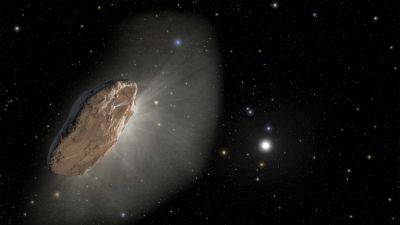
Aircraft-sized asteroid hurtling towards Earth; You too can help NASA track these space rocks
We know that asteroids revolve around the Sun in their own elliptical orbits, and most of them are located in the main asteroid belt present between the orbits of Jupiter and Mars. So how do they come close to Earth? According to NASA, this can happen if an asteroid gets knocked off course, affected by a large planet's gravitational pull. Their orbits can also bring them extremely close to Earth. Although these close approaches might threaten the planet, they can also help scientists study asteroids up close which can aid in discovering secrets of space!

After 70 years, Asteroid 2022 CP1 approaches Earth again; NASA provides details
The asteroid that struck Earth around 65 million years ago profoundly impacted the planet's future. While this impact was disastrous, it wasn't the biggest asteroid to ever hit Earth. Researchers have now found the crater of the largest asteroid to ever hit the planet located beneath the surface in New South Wales, Australia. The Deniliquin structure, which is nearly 520 kilometers wide, surpasses the previously known biggest asteroid crater called Vredefort, which was around 300 kilometers wide. The Deniliquin impact likely occurred on Gondwana's eastern part before its continent fragmentation.
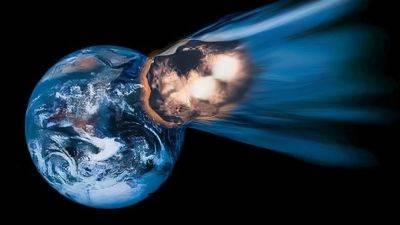
NASA clocks Asteroid 2023 PX at 27252 kmph and it is hurtling towards Earth
Asteroids are space rocks mostly present in the main asteroid belt between the orbits of Mars and Jupiter. Since these bodies are so far, how do NASA and other space agencies track them? Sometimes, interaction with a planet's gravitational field knocks these asteroids off their trajectories and sends them towards a planet like Earth for potential impact. When NASA's telescopes track a new Near-Earth Asteroid (NEA), astronomers measure the asteroid's observed positions in the sky and report them to the Minor Planet Center. The Center for Near-Earth Object Studies (CNEOS) then uses that data to determine the asteroid's most likely orbit around the Sun, according to NASA.

Aircraft-sized asteroid set for Earth approach today! NASA reveals details
NASA's Double Asteroid Redirection Test or DART, was carried out in September last year with the space agency smashing a spacecraft into the Dimorphos asteroid to knock it off its course. It was the first-ever planetary defense test conducted to protect Earth against potential asteroid impacts in the future. Now, the European Space Agency's Hera spacecraft will observe the aftermath of the collision and even capture images of the asteroid's interior when it launches in 2024.
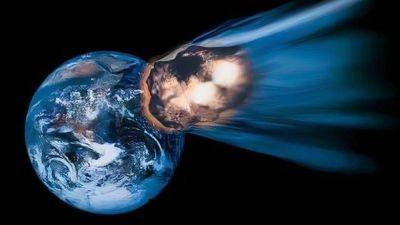
95-feet asteroid set for close approach with Earth! Check speed, size and more
Asteroids are rocky, airless remnants left over from the early formation of our solar system around 4.6 billion years ago, according to NASA. While most of them are located in the main asteroid belt between the orbits of Mars and Jupiter, the orbits of these space rocks sometimes bring them close to Earth. Thus, it is imperative that these asteroids are observed and tracked for potentially hazardous situations. NASA has various ground and space-based telescopes to study them.
